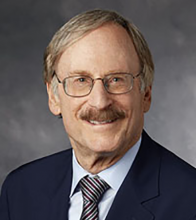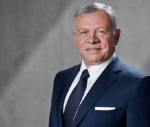You are here
The economic wisdom of George Shultz
Feb 21,2021 - Last updated at Feb 21,2021
STANFORD — George Shultz, who died this month at age 100, is best known for being US president Ronald Reagan’s secretary of state. Their close working relationship enabled them to limit nuclear weapons, help end the Cold War, and champion human rights.
Words like “great” and “extraordinary” have been so debased nowadays that they sound out of place even when they are truly deserved. In fact, words may fail to convey the depth, breadth and enduring impact Shultz had on the world, and on economic policy in particular. While melding, as he put it, ideas into action, he never lost his grace, humility and integrity.
I had the privilege of working closely with him for five decades on a wide array of public policy issues, when we were each in and out of government and at the Hoover Institution. He became a cherished colleague, mentor and role model to me and many others. And he was a close friend: I was a pallbearer at his first wife’s funeral, and he saw my wife through my life-threatening emergency surgery.
George thought strategically, with a view to the long term, which he attributed to his training as an economist. Be a compass, not a weather vane was his modus operandi. In four Cabinet positions and a lifetime of advising American political leaders at the federal and state level, he profoundly affected policies on labor strikes and racial inequities; budgets, debt management and tax reform; trade and exchange rates; regulation; money and interest rates; entitlements and education; and drugs and the environment.
Our many personal interactions began in 1973, when as US Treasury secretary, he asked Martin Feldstein and me to advise the Filer Commission, which he and Wilbur Mills, then the chair of the powerful House Ways and Means Committee, promoted to recommend policies toward private philanthropy. George and I often ruminated that the large role of private philanthropy relative to government was an important factor underlying America’s success. Our research found that the tax deduction for charitable giving had a sizable impact on the level of philanthropy, and the commission’s report was essential to fending off abolition of the deduction.
Soon thereafter, George and I met with California governor Jerry Brown, who wanted advice on his budget. He tried to convince us to support building an ever-larger surplus. We advised him that doing so would invite trouble, given that high inflation was driving people into higher tax brackets and sending property tax assessments soaring. Structural tax reform and reduction made more sense. California’s famous Proposition 13, which capped property taxes, ended Brown’s plan.
In 1979, George invited a few economists to his home for dinner with Reagan, who was seeking the Republican Party’s presidential nomination. He wanted me to push Reagan on the nuances of supply-side economics, while Milton Friedman pressed him to back a potentially painful disinflation. Reagan responded that lower tax rates would recover all revenue only if rates were high enough or were on activities extremely responsive to taxation, but that they would unleash the economy’s dynamism well before that. And he pledged firm support for disinflation. His answers were perfect, and he realised them as president.
George and the economist Martin Anderson then asked me to join Reagan’s campaign. I helped prepare Reagan for the candidate debates, and develop the tax policies that led to lowering marginal rates, indexing tax brackets to inflation, accelerating depreciation, and introducing tax-deferred saving, partly based on my research on the effects of taxes on saving.
These were historic improvements in the tax code. But an overdue defence buildup and difficulty in reducing other spending led to budget deficits that seemed large at the time; today, they are dwarfed, adjusted for the business cycle, by the Obama, Trump, and now Biden deficits.
After I returned from the White House, George led a small group to advise California governor Pete Wilson on fiscal and other issues. When Los Angeles was crippled by a devastating earthquake in 1994, George solicited ideas. I suggested that Wilson use emergency powers to waive the approvals that took years to process following the 1989 earthquake in the Bay Area. Our team honed the plan, which included financial incentives for speed and fines for delay, and Wilson ran with it. The freeways were rebuilt in weeks, not years, preventing LA’s notorious traffic gridlock from becoming economically ruinous.
We later gave the same advice to Governor Arnold Schwarzenegger in a less severe situation. That was quintessentially George: work on problems from world peace to road repair, find solutions, and do what you can to make things better.
In president Richard Nixon’s White House, he pushed, with strong urging from Friedman, to end dollar convertibility to gold, paving the way for an international trade regime with flexible, not fixed, exchange rates, which became a key part of Nixon’s 1971 New Economic Policy. Unfortunately, another key part was disastrous wage and price controls, which George unsuccessfully opposed.
George’s astonishing ability to get to the essence of complex situations and devise a way forward wasn’t just about analysis, charts, and data. He never lost sight of, indeed always emphasised, that economic policy is about people’s lives. Affirmative action to achieve racial or gender balance is often criticised as imposing harmful quotas. Even deep blue California voters decisively rejected such policies in state hiring and education. But, as Nixon’s labour secretary in 1969, he initiated affirmative action to end a quota of zero black people in the Philadelphia building trades.
George worked until the end, including on our federalism project, and left the world a better place with his ideas, service, mentorship, and the example he set of using intelligence, experience, and fortitude to tackle hard problems with a big heart. Rest in peace, wise, humble giant.
Michael J. Boskin, professor of Economics at Stanford University and senior fellow at the Hoover Institution, was chairman of George H.W. Bush’s Council of Economic Advisers from 1989 to 1993. Copyright: Project Syndicate, 2021.













